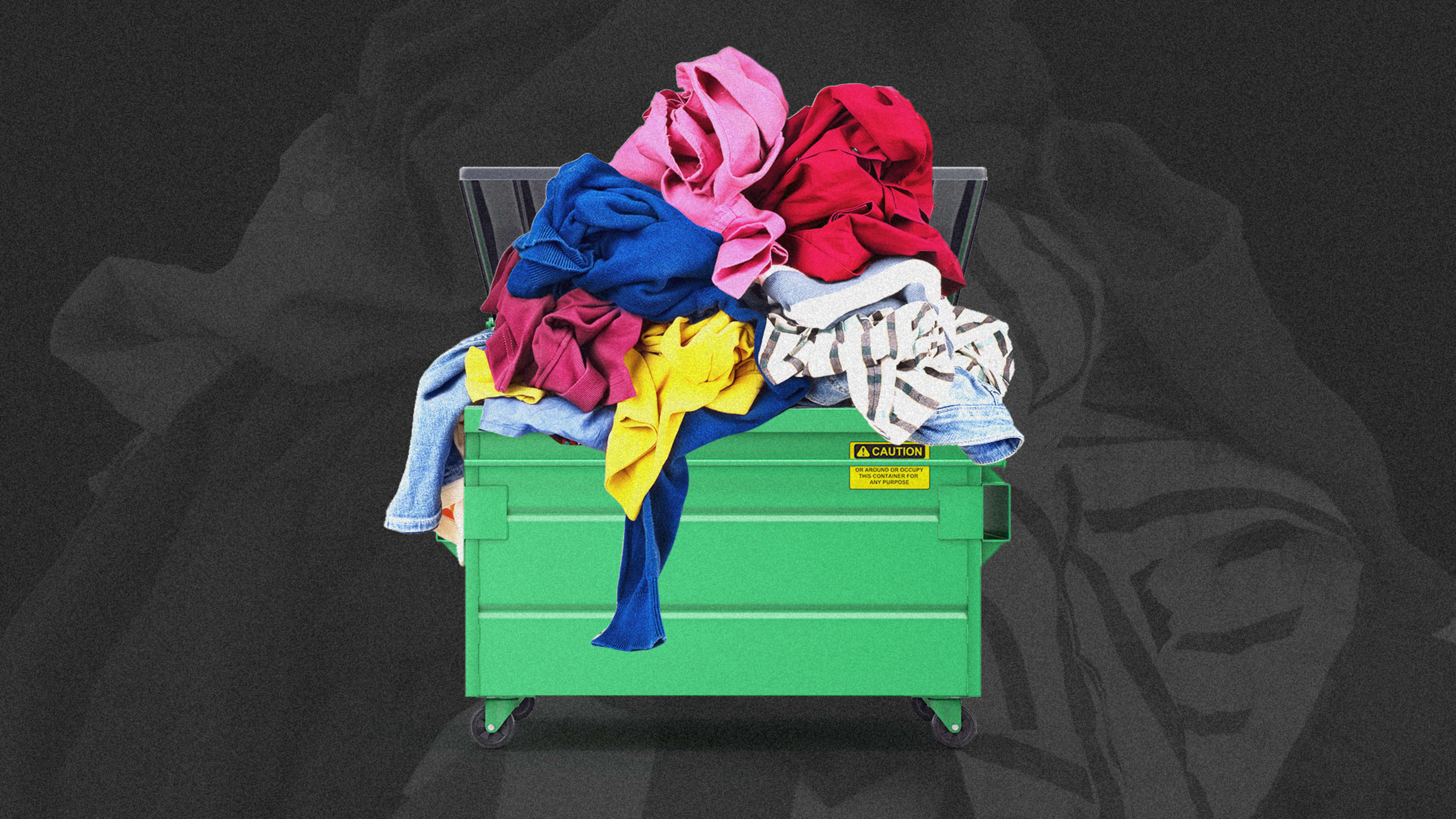Perhaps it is not surprising that New York City, one of the fashion capitals of the world, generates a lot of fashion waste. New Yorkers throw 200 million pounds of clothing into the trash every year. That’s the equivalent of 440 Statues of Liberty. Those clothes end up in landfills, where they will sit for at least 200 years.

Most of these drop-off points already existed, although about two dozen were launched to coincide with this campaign. Yet the EPA says that only 14.2% of clothes and shoes were recycled in 2015. Francois Souchet, the head of Make Fashion Circular, a division of the Ellen MacArthur Foundation, says the point of this new outreach is to show New Yorkers that this resource has been there for them all along.
“[O]ur real ambition was to show the potential of the existing system,” he says. “New York has many better options for old clothing than landfills. It’s a powerful opportunity to show what can happen when the industry comes together.”
Fast fashion brands including ASOS, H&M, Reformation, and Zara also helped support this campaign, which makes sense since they make clothes that are very closely linked to fashion trends, which means that customers often don’t have a reason to wear the clothes once they are out of style. Over the last few years, many of these brands have faced criticism–including from this publication–for helping spur on the environmental crisis by turning clothes into disposable items. Other companies that are part of this effort include clothing resale company ThredUP, and Lenzing, which makes eco-friendly fibers.
Clothing recycling hasn’t been widely available in the past. Most people donated their old clothes to organizations like Goodwill and Salvation Army, but only a proportion of those clothes end up being sold or given to people in need. A large amount ends up being sent to landfills anyway.
We’re now seeing many different strategies for recycling fabrics. Mechanical recycling, for instance, involves chopping up cloth into smaller bits then using it for new purposes, like insulation in houses, or stuffing cushions. More advanced chemical recycling techniques are also being developed. This involves breaking down fibers and re-creating them. This is easier to do with fabrics that are entirely made of one material, like cashmere, wool, or cotton, but these are fairly rare since most clothing is made of fabric with several kinds of fiber blended together. Now, organizations like the H&M Foundation are investing in scientific research to develop ways to separate fibers in blended fabric, then recycle them each separately.
In other words, it is worth gathering all of these clothes now, because companies are investing in developing the recycling technology we need to turn those clothes into new clothes. This would not just be better for the planet, but for fashion businesses themselves. A report published by the Ellen MacArthur Foundation in 2017 found that the fashion industry currently stands to gain $100 billion every year by recapturing the materials from old clothes, rather than letting them get landfilled or incinerated.
Of course, New Yorkers aren’t the only ones guilty of clogging up the landfills with their clothes. The EPA estimates that 10.5 million tons of textiles were sent to landfills in the United States in 2015, the last time the data was collected. That’s a lot of unnecessary waste. But the Ellen MacArthur Foundation is counting on the fact that New York is a city where fashion trends begin. Could 2019 be the year that recycling clothing becomes all the rage?
Recognize your brand’s excellence by applying to this year’s Brands That Matter Awards before the early-rate deadline, May 3.
